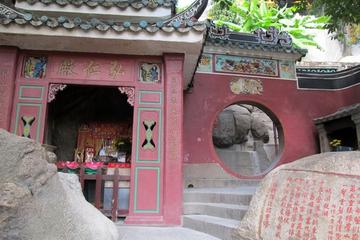A-Ma Temple (Ma Kok Miu)
TIME : 2016/2/22 10:11:16

A-Ma Temple (Ma Kok Miu)
In a testament to the A-Ma Temple, it’s believed by many historians that the peninsula of Macau is in fact named after this very spot. An exquisite Taoist complex dating to 1488, the temple is dedicated to A-Ma, a Taoist Goddess of seafaring and mariner’s fortune. At the modern day entrance to the temple a stone engraving of a traditional sailing junk serves as a nod to A-Ma’s long-lasting connection to the sea. Also known by the names of Mazu or Matsu, the goddess has nearly 2,500 temples around the world devoted to her praise and worship.
Upon arriving in Macau the original Portuguese sailors inquired about the name of this newfound land. In a cross-lingual miscommunication the original inhabitants offered the name of the area surrounding the temple:
A-ma-gao. From this point forward it would be known to the Portuguese as
A-ma-gao, or, in its abbreviated form, Macau. Even today visitors are able to pay homage to a large statue of A-Ma (Mazu) residing in the temple’s Hongren Hall.
The oldest temple in Macau and the largest of those dedicated to A-Ma, the A-Ma temple is a secluded respite from the ultra-crowded streets of one of the world’s most densely populated areas. Tucked into the stone mountainside, multiple prayer halls, courtyards and pavilions all interconnect through a series of manicured, meandering walkways. Inside many of the halls the potent aroma of incense emanates from spiraled coils dangling from the ceiling like wiry, oversized beehives. In the upper courtyard temple-goers are treated to a sweeping view of the Macau Peninsula as well as the traditional Chinese architecture of the historic temple. Like many other sites in downtown Macau, the A-Ma Temple is listed as one of the buildings in the UNESCO recognized Historic Centre of Macau.
